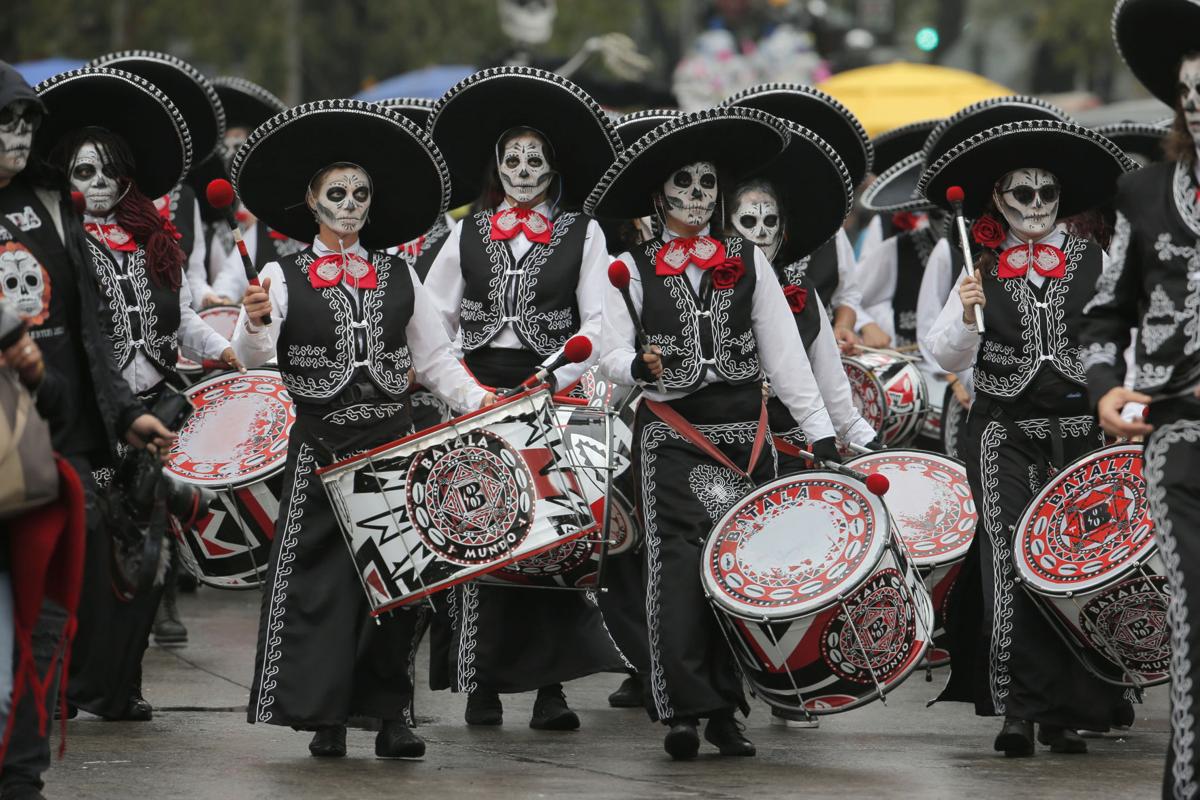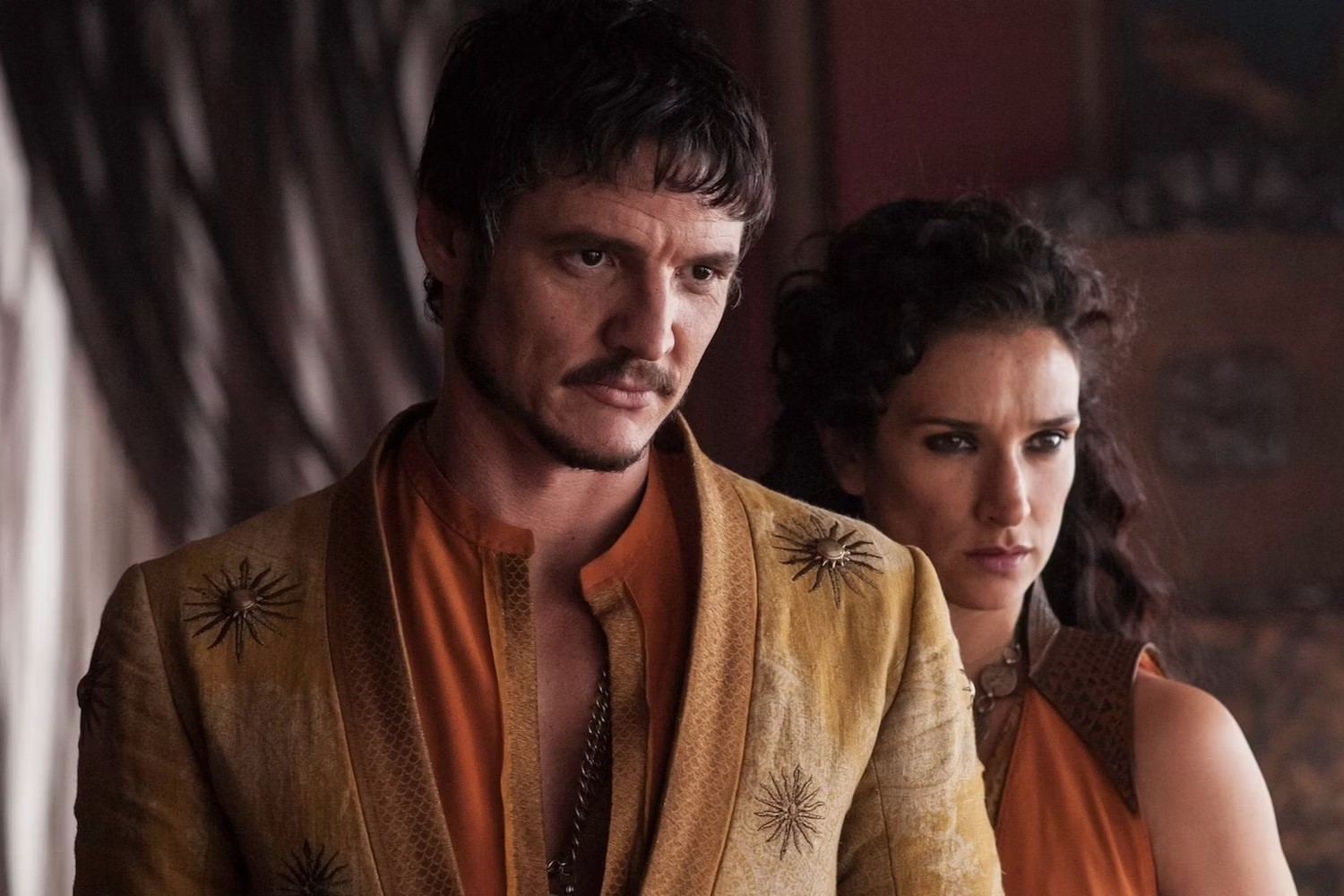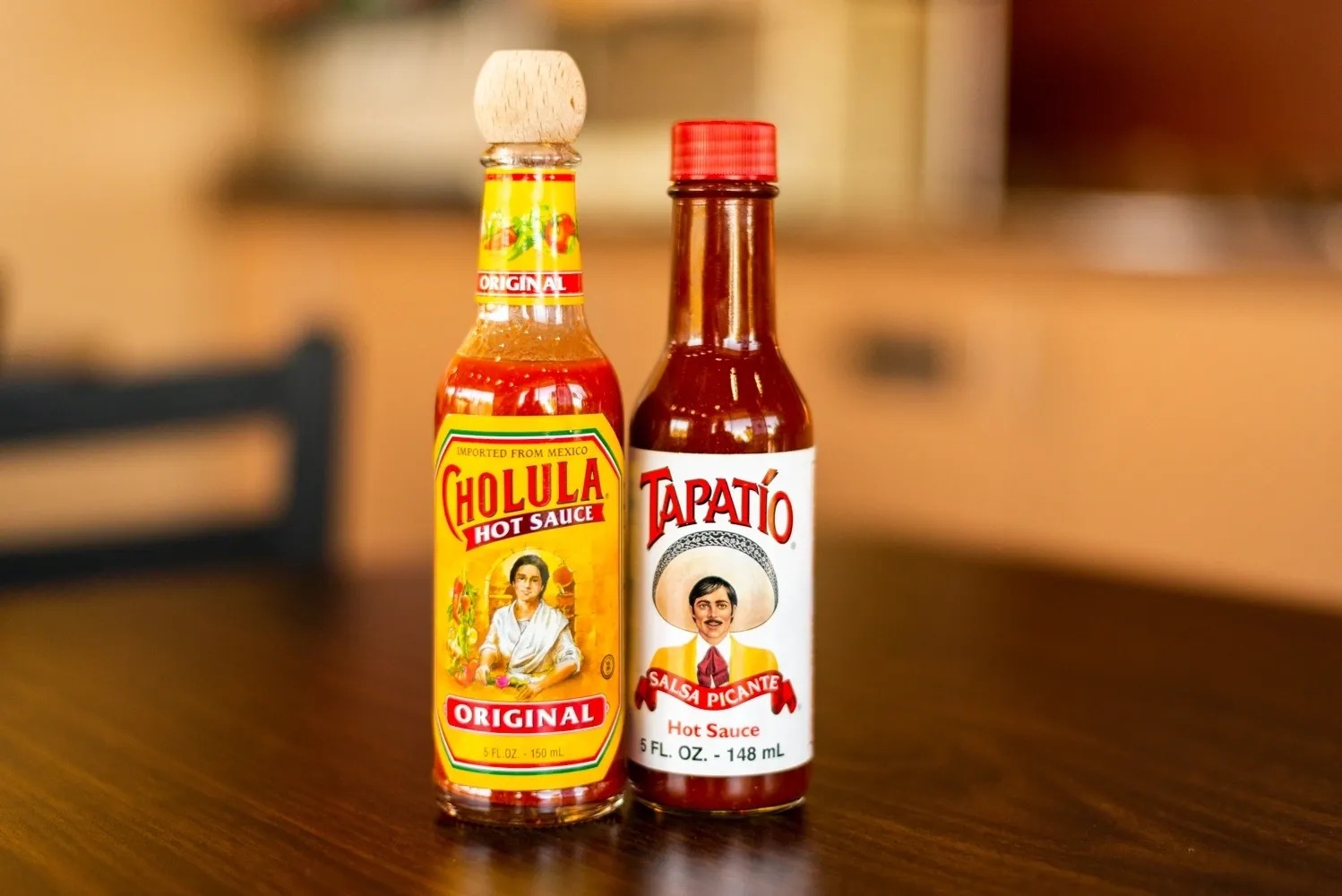Home>Arts and Culture>Cinco De Mayo Vs. Day Of The Dead: Unveiling The Mexican Celebrations


Arts and Culture
Cinco De Mayo Vs. Day Of The Dead: Unveiling The Mexican Celebrations
Modified: March 3, 2024
Discover the rich Mexican traditions and celebrations of Cinco de Mayo and Day of the Dead. Explore the arts and culture behind these vibrant festivities.
(Many of the links in this article redirect to a specific reviewed product. Your purchase of these products through affiliate links helps to generate commission for Noodls.com, at no extra cost. Learn more)
Table of Contents
Introduction
Mexico is a country rich in vibrant cultural traditions and celebrations that captivate the world with their colorful festivities and deep historical significance. Two of the most renowned Mexican holidays, Cinco de Mayo and Day of the Dead, hold special places in the hearts of the Mexican people and have also gained widespread recognition beyond the borders of Mexico. While both occasions are steeped in tradition and hold immense cultural significance, they are distinct in their historical origins, themes, and the manner in which they are celebrated.
In this article, we will embark on a captivating journey to unravel the intricacies of these two iconic Mexican celebrations, shedding light on their historical roots, cultural significance, and the unique traditions that make them so cherished. From the spirited commemoration of Cinco de Mayo to the poignant and reverent observance of Day of the Dead, we will explore the captivating tapestry of Mexican culture woven through these two distinct yet equally captivating holidays.
Join us as we delve into the heart of Mexican heritage and uncover the captivating stories and traditions that have shaped these beloved celebrations. Let's embark on a colorful and enlightening exploration of Cinco de Mayo and Day of the Dead, immersing ourselves in the rich tapestry of Mexican culture and the vibrant spirit of its people.
Read more: Betta Fish Vs. Goldfish: Deadly Showdown!
Historical Background
The historical backdrop of Cinco de Mayo and Day of the Dead is deeply rooted in the rich tapestry of Mexican history, each with its own unique narrative that has shaped the cultural identity of the Mexican people.
Cinco de Mayo, celebrated on the 5th of May, commemorates the remarkable victory of the Mexican army over the French forces at the Battle of Puebla in 1862. This triumph holds immense historical significance as it symbolizes the resilience and indomitable spirit of the Mexican people in the face of adversity. The battle was a pivotal moment in Mexican history, as it not only thwarted the French invasion but also served as a source of national pride and unity. Although often misconstrued as Mexico's Independence Day, which is actually celebrated on September 16th, Cinco de Mayo remains a symbol of Mexican resistance and the enduring fight for freedom.
On the other hand, Day of the Dead, known as Día de los Muertos, has its origins in the indigenous Aztec rituals honoring deceased ancestors. This deeply rooted tradition evolved over centuries, blending with Catholic influences brought by the Spanish conquistadors. The fusion of these cultural elements gave rise to the vibrant and poignant commemoration of Day of the Dead, a time when families gather to honor and remember their departed loved ones. The festivities, which take place from October 31st to November 2nd, are characterized by colorful altars adorned with marigolds, offerings of favorite foods and beverages of the departed, and intricately crafted sugar skulls. It is a time of remembrance, love, and spiritual connection, where death is not mourned but celebrated as an integral part of the cycle of life.
The historical roots of Cinco de Mayo and Day of the Dead reflect the resilience, unity, and profound connection to ancestral heritage that define the Mexican cultural identity. These celebrations serve as poignant reminders of the enduring spirit and rich traditions that continue to thrive within the heart of Mexico and resonate across the globe.
Significance of Cinco de Mayo
Cinco de Mayo holds profound significance in Mexican history and culture, symbolizing the resilience, unity, and national pride of the Mexican people. The historic victory of the Mexican army over the powerful French forces at the Battle of Puebla on May 5, 1862, marked a pivotal moment in Mexico's struggle for independence and sovereignty. Although not a federal holiday in Mexico, Cinco de Mayo is widely celebrated, serving as a testament to the unwavering spirit and determination of the Mexican nation.
This momentous triumph was a remarkable display of Mexican resilience in the face of overwhelming odds. The battle, which took place in the town of Puebla, served as a rallying cry for Mexican unity and defiance against foreign intervention. Despite being outnumbered and outgunned, the Mexican forces, led by General Ignacio Zaragoza, displayed extraordinary courage and tenacity, repelling the advancing French army in a stunning victory that resonated far beyond the battlefield.
The significance of Cinco de Mayo extends beyond the historical victory itself, embodying the spirit of national pride and unity. It serves as a powerful symbol of Mexican identity, resilience, and the enduring fight for freedom. The celebration of Cinco de Mayo is a vibrant affirmation of Mexican culture, showcasing traditional music, dance, and cuisine that reflect the rich tapestry of Mexico's heritage.
Furthermore, Cinco de Mayo has transcended its historical roots and evolved into a global celebration of Mexican culture and heritage. Across the United States and various parts of the world, Cinco de Mayo is commemorated with colorful parades, lively festivals, and joyful gatherings that showcase the diverse and vibrant traditions of Mexico.
In essence, Cinco de Mayo represents a triumph of the human spirit, a testament to the courage and determination of a nation, and a vibrant celebration of Mexican culture and heritage. It stands as a powerful reminder of the indomitable spirit that continues to define the Mexican people and their rich cultural legacy.
Significance of Day of the Dead
Day of the Dead, known as Día de los Muertos, holds profound significance in Mexican culture, serving as a poignant and reverent commemoration of departed loved ones. This ancient tradition, with its roots in pre-Columbian Mesoamerican rituals, has evolved into a vibrant and deeply symbolic celebration that honors the cycle of life and death.
The significance of Day of the Dead lies in its role as a bridge between the realms of the living and the departed. It is a time when families and communities come together to honor and remember their ancestors, embracing the belief that the spirits of the deceased return to join the living in a joyous reunion. This spiritual connection is at the heart of the celebration, as families create elaborate altars adorned with marigolds, the traditional flower of the dead, and an array of offerings that reflect the favorite foods, beverages, and cherished possessions of those who have passed on.
The festivities, which unfold from October 31st to November 2nd, are infused with vibrant colors, lively music, and the irresistible aroma of traditional foods. Families gather at cemeteries to clean and decorate the graves of their loved ones, transforming the somber surroundings into vibrant and lovingly adorned spaces. It is a time of reflection, love, and spiritual communion, where death is not mourned but embraced as an integral part of the human experience.
Moreover, the significance of Day of the Dead extends beyond its role as a familial remembrance. It is a celebration that encapsulates the rich cultural tapestry of Mexico, blending indigenous traditions with Catholic influences to create a unique and deeply meaningful observance. The iconic imagery of intricately crafted sugar skulls, vibrant papel picado (decorative paper), and the hauntingly beautiful Catrina figures all contribute to the visual splendor and cultural richness of the festivities.
Day of the Dead is a testament to the enduring bond between the living and the departed, an affirmation of the belief that love and remembrance can transcend the boundaries of mortality. It is a celebration that embraces the profound interconnectedness of life and death, weaving together the threads of tradition, spirituality, and communal reverence into a tapestry of vibrant colors and heartfelt remembrance.
In essence, the significance of Day of the Dead lies in its role as a deeply symbolic and spiritually enriching celebration that honors the memory of departed loved ones, celebrates the continuity of life, and exemplifies the profound cultural heritage of Mexico.
Traditions and Celebrations
The traditions and celebrations of Cinco de Mayo and Day of the Dead are steeped in rich cultural symbolism, vibrant rituals, and communal gatherings that encapsulate the spirit and heritage of Mexico.
Cinco de Mayo
Cinco de Mayo is celebrated with exuberant displays of traditional music, dance, and cuisine that reflect the vivacious spirit of Mexican culture. Colorful parades featuring elaborately costumed dancers and musicians fill the streets, accompanied by the infectious rhythms of mariachi bands. The jubilant atmosphere resonates with the lively sounds of traditional Mexican folk music, infusing the air with an undeniable sense of joy and celebration. Additionally, vibrant decorations, including papel picado (intricately cut paper banners) and vivid floral arrangements, adorn public spaces and private homes, adding a festive touch to the surroundings.
Central to the celebrations are the culinary delights that embody the essence of Mexican gastronomy. From sizzling street tacos and flavorful tamales to the refreshing tang of aguas frescas, the tantalizing array of traditional dishes delights the senses and unites people in shared culinary revelry. Moreover, the spirited toasts with Mexican beverages, such as tequila and mezcal, further enhance the convivial ambiance, fostering a sense of camaraderie and shared festivity.
Day of the Dead
In contrast, the traditions and celebrations of Day of the Dead are characterized by a poignant and reverent ambiance that honors the spiritual connection between the living and the departed. Families meticulously construct ornate altars, or ofrendas, adorned with vibrant marigolds, flickering candles, and an array of offerings. These offerings, which include the deceased's favorite foods, beverages, and mementos, serve as a loving tribute to their lives and an invitation for their spirits to partake in the festivities.
The streets come alive with the vibrant hues of calaveras de azúcar (sugar skulls) and intricately crafted papel picado, infusing the surroundings with an ethereal beauty that transcends the mortal realm. Families gather at cemeteries to lovingly clean and decorate the graves of their loved ones, transforming the somber setting into a vibrant tapestry of remembrance and reverence.
Both celebrations serve as vibrant expressions of Mexican culture, each weaving a tapestry of traditions, symbolism, and communal revelry that reflects the enduring spirit and rich heritage of Mexico. Whether through the jubilant festivities of Cinco de Mayo or the heartfelt remembrance of Day of the Dead, these celebrations stand as testaments to the profound cultural legacy and enduring traditions that continue to thrive within the heart of Mexico and resonate across the globe.
Misconceptions and Differences
Misconceptions often arise regarding the nature and significance of Cinco de Mayo and Day of the Dead, leading to misunderstandings about these iconic Mexican celebrations. One prevalent misconception is the belief that Cinco de Mayo is Mexico's Independence Day. In reality, Mexico's Independence Day is celebrated on September 16th, marking the country's declaration of independence from Spanish colonial rule in 1810. Cinco de Mayo, as previously mentioned, commemorates the Mexican army's victory over the French forces at the Battle of Puebla in 1862. It is essential to recognize that while Cinco de Mayo holds profound historical significance, it is not synonymous with Mexico's Independence Day.
Another common misconception pertains to the perception of Day of the Dead as a morbid or mournful occasion. Contrary to this misconception, Day of the Dead is a vibrant and spiritually uplifting celebration that honors the lives and memories of departed loved ones. It is a time of joyous remembrance, where families gather to celebrate the enduring bond between the living and the deceased. The colorful altars, adorned with marigolds and an abundance of offerings, symbolize the loving connection between the realms of the living and the departed, dispelling the misconception of a somber or melancholic observance.
Furthermore, the differences between Cinco de Mayo and Day of the Dead are rooted in their historical origins, themes, and the manner in which they are celebrated. Cinco de Mayo commemorates a significant military victory and serves as a symbol of Mexican unity and resilience in the face of adversity. Its celebrations are characterized by lively parades, traditional music, and the jubilant revelry that reflects the triumph of the human spirit over adversity. On the other hand, Day of the Dead is a deeply spiritual and familial observance that embraces the interconnectedness of life and death. Its traditions center around honoring and remembering departed loved ones through colorful altars, vibrant decorations, and heartfelt gatherings that celebrate the continuity of life and the enduring bond between generations.
Understanding the distinctions and dispelling misconceptions surrounding Cinco de Mayo and Day of the Dead is crucial in appreciating the depth and cultural significance of these cherished Mexican celebrations. By acknowledging their unique historical contexts and the richness of their traditions, we can gain a deeper understanding of the profound heritage and enduring spirit that define these iconic holidays.
Conclusion
In conclusion, the Mexican celebrations of Cinco de Mayo and Day of the Dead stand as vibrant testaments to the rich cultural heritage and profound traditions that define Mexico. These iconic holidays, each with its own unique historical significance and thematic resonance, serve as captivating windows into the heart of Mexican identity and resilience.
Cinco de Mayo, commemorating the historic victory at the Battle of Puebla, embodies the spirit of Mexican unity, resilience, and national pride. Its celebrations pulsate with the lively rhythms of traditional music, the vibrant hues of festive decorations, and the irresistible aromas of authentic Mexican cuisine. Through jubilant parades and spirited gatherings, Cinco de Mayo showcases the enduring triumph of the human spirit over adversity, inviting people to revel in the vivacious tapestry of Mexican culture.
Conversely, Day of the Dead is a poignant and spiritually enriching observance that honors the interconnectedness of life and death. Rooted in ancient Mesoamerican traditions and infused with Catholic influences, this vibrant celebration transcends the boundaries of mortality, inviting families to create colorful altars, adorn graves with love and reverence, and embrace the enduring bond between the living and the departed. Day of the Dead serves as a joyous commemoration of ancestral heritage, a vibrant tapestry of remembrance, and a testament to the enduring spirit of Mexican culture.
As we unravel the captivating narratives and traditions of Cinco de Mayo and Day of the Dead, we are drawn into the heart of Mexico's cultural tapestry, where resilience, unity, and spiritual connection intertwine to create an immersive and enlightening experience. These celebrations, with their vibrant displays of tradition and communal revelry, offer profound insights into the enduring spirit and rich heritage of Mexico, captivating the world with their colorful festivities and deep cultural significance.
In essence, Cinco de Mayo and Day of the Dead stand as vibrant reflections of the Mexican spirit, inviting us to embrace the resilience, unity, and profound interconnectedness that define the heart of Mexican culture. Through these iconic celebrations, we are reminded of the enduring legacy and rich traditions that continue to thrive within the soul of Mexico and resonate across the globe.














